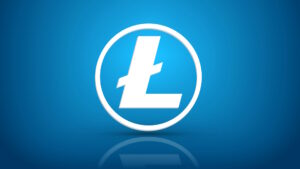Global risk-assessment firm Moody’s Corp. is reportedly working on a scoring system for stablecoins due to their rising prominence and staying power in crypto space and the broader economy.
Bloomberg reports that the firm is developing a system which will provide analysis for up to 20 stablecoins “based on the quality of attestations on the reserves backing them”, according to an anonymous source.
A reserve attestation is not a full audit, but a verification by a reputable accounting firm that the reserves claimed to be held in a company’s treasury exist. Moody’s stablecoin scoring system is in its early phases of development and will not be an official credit rating, per the report.
Moody’s was one of the risk assessors which rated risky mortgage securities in the run-up to the 2008 financial crisis. In 2017, the credit rating agency settled $864m with US federal and state authorities over its incorrect ratings.
Recent stablecoin history
Regulatory scrutiny has increased over the years alongside the growing market capitalisation of top stablecoins Tether (USDT), USD Coin (USDC) and Binance USD (BUSD). Together, the top three stablecoins account for about $126 billion in value, equalling roughly 12% of the total market cap.
The collapse of algorithmic stablecoin TerraUSD in May 2022 increased the overall scrutiny which stablecoins now face, as its implosion resulted in a chain reaction of insolvencies, high profile bankruptcies and fraud which culminated in FTX, Silvergate and DCG woes.
Tether scrutiny
The main concerns surrounding most stablecoins related to whether assets and liabilities held in reserves back the value of assets in circulation. Tether, tends to receive the most scrutiny in this regard despite being the most widely adopted and durable stablecoin to date. Still, Tether settled with the New York Attorney General’s office in 2021 after supposedly misrepresenting the amount of fiat collateral backing its USDT stablecoin. In addition to paying $18.5 million in damages to the state of New York, the company was required to submit periodic disclosures of its reserves.
The company has provided proof-of-reserves, in keeping with developing industry standards.
That said, the stablecoin market is still expected to grow, per JPMorgan analysts. A research report in September 2022 underlined Tether’s structural importance to the industry, noting that Tether’s average daily trading volume is ten times that of USDC.
Key differences
One key difference that will likely be included is that between an algorithmic and collateral stablecoins. An algorithmic stablecoin uses automation, algorithms and smart contracts to maintain its value, which adjusts the supply in response to demand to maintain stability. This is done by adjusting interest rates paid to holders and other methods such as over-collateralisation.
On the other hand, a collateral stablecoin is backed by reserve assets like fiat money, gold or US Treasuries. These assets are held in a trust and the value of the stablecoin is tied to the value of those assets.
Join the telegram channel for updates, charts, ideas and deals.
Did you like the article? Share it!


